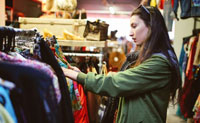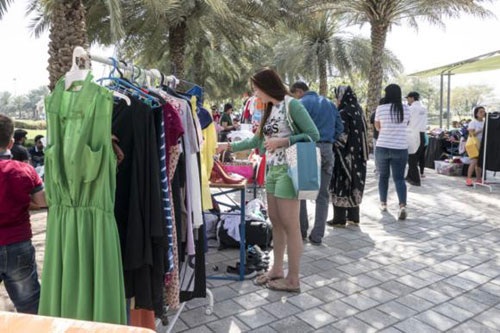Not so long ago, buying secondhand clothes was considered low-class. These were bought in either charity shops of thrift stores at reduced prices. However, things changed with the resale market for secondhand fashion in the United States growing 21 times faster than retail sales of new clothing over the past three years. The market is currently worth $24 billion and expected to reach $51 billion by the middle of the next decade.
 Not so long ago, buying secondhand clothes was considered low-class. These were bought in either charity shops of thrift stores at reduced prices. However, things changed with the resale market for secondhand fashion in the United States growing 21 times faster than retail sales of new clothing over the past three years. The market is currently worth $24 billion and expected to reach $51 billion by the middle of the next decade.
Not so long ago, buying secondhand clothes was considered low-class. These were bought in either charity shops of thrift stores at reduced prices. However, things changed with the resale market for secondhand fashion in the United States growing 21 times faster than retail sales of new clothing over the past three years. The market is currently worth $24 billion and expected to reach $51 billion by the middle of the next decade.
Gen Z consumers to drive most growth
Neil Saunders, GlobalData Managing Director & Lead Market Analyst for fashion resale website thredUP’s 2019 Resale Report expects this growth to continue as the market meets its consumers’ preferences for variety, value, and sustainability. As per the research, a consistent proportion of shoppers buy secondhand clothes at all price levels. In the luxury retail segment, around 26 per cent buy resale items, in the mid-market around 25 per cent opt for second-hand clothes while at the discount end 22 per cent consumers buy second-hand clothes.
expects this growth to continue as the market meets its consumers’ preferences for variety, value, and sustainability. As per the research, a consistent proportion of shoppers buy secondhand clothes at all price levels. In the luxury retail segment, around 26 per cent buy resale items, in the mid-market around 25 per cent opt for second-hand clothes while at the discount end 22 per cent consumers buy second-hand clothes.
Millennials are most likely to buy second-hand clothes, followed by boomers – with 33 per cent and 31 per cent respectively buying secondhand. On the other hand, only 16 per cent of Gen Z and 20 per cent of Gen X consumers prefer buying second-hand clothes.
But it’s the Gen Z which is expected to drive the most growth. One in three people aged 18-24 are forecast to buy secondhand items this year, making them the resale world’s biggest fans.
E-commerce boom fuels interest
The growing interest in secondhand is being driven the e-commerce boom which allows people to buy and sell second hands at the click of a button. This phenomenon has also given rise to a new niche of micro-retailers that deal exclusively on the internet. These retailers not only sell items they own, but also buying them from other sources like eBay, Houzz and Etsy.
Another factor driving growth is the rise of the conscious consumer. As per ThredUP, around 72 per cent consumers are more likely to buy from environmentally friendly sources. However, as sustainable fashion is expensive, the secondhand sector offers them purchase of eco-friendly products at affordable rates. Known to be one of the biggest polluting industries, the fashion sector not only consumes vast amounts of resources but also generates around 20 per cent of the world’s wastewater. The sector is expected to be responsible for 25 per cent of the global carbon budget by 2050.
New strategies to survive the retail revolution
An industry suffering at the hands of the secondhand sector is the retail sector. As shoppers now prefer to buy online, at a time and in a place that suits them, stores are witnessing declining footfall. These retailers now need to formulate new strategies to survive in the competitive market. This however, might not be overtly difficult as 87 per cent of senior retail executives in the thredUP research expressed their desire to be involved in reselling secondhand fashion by 2020.












